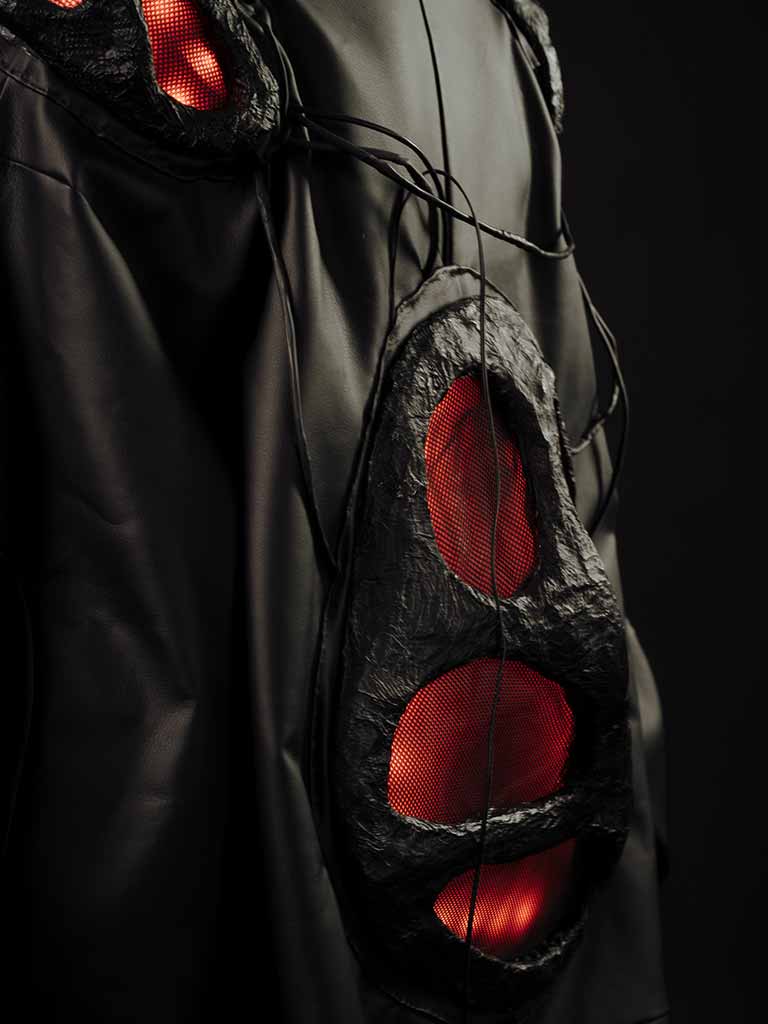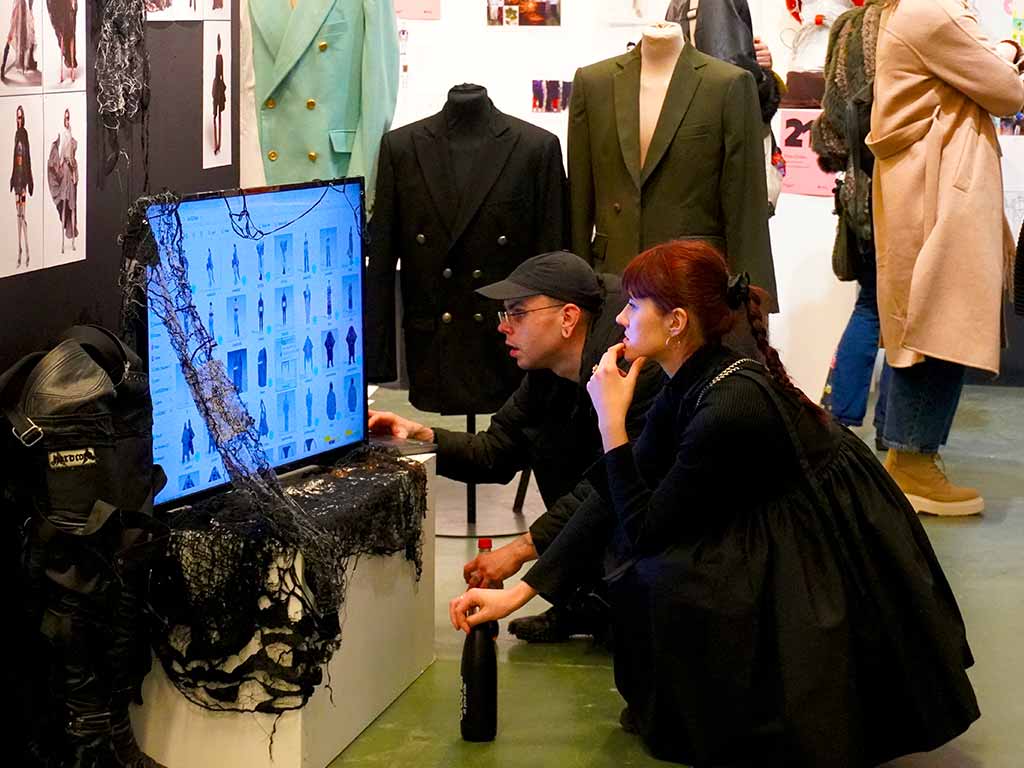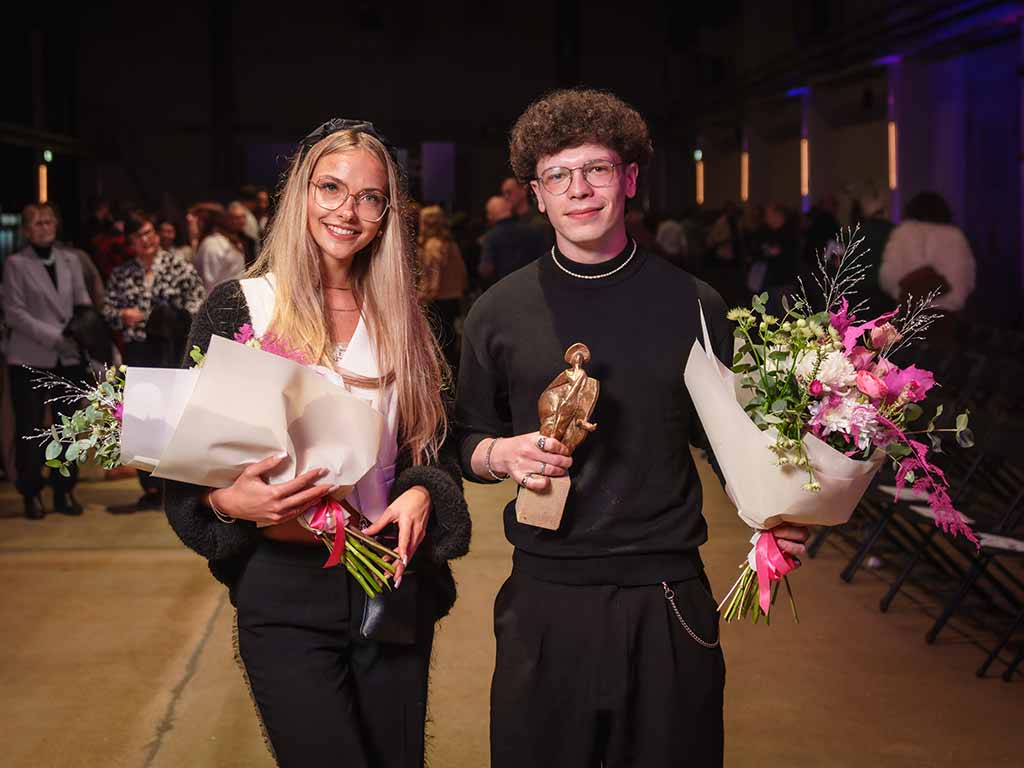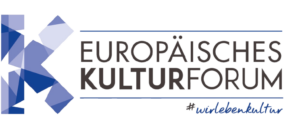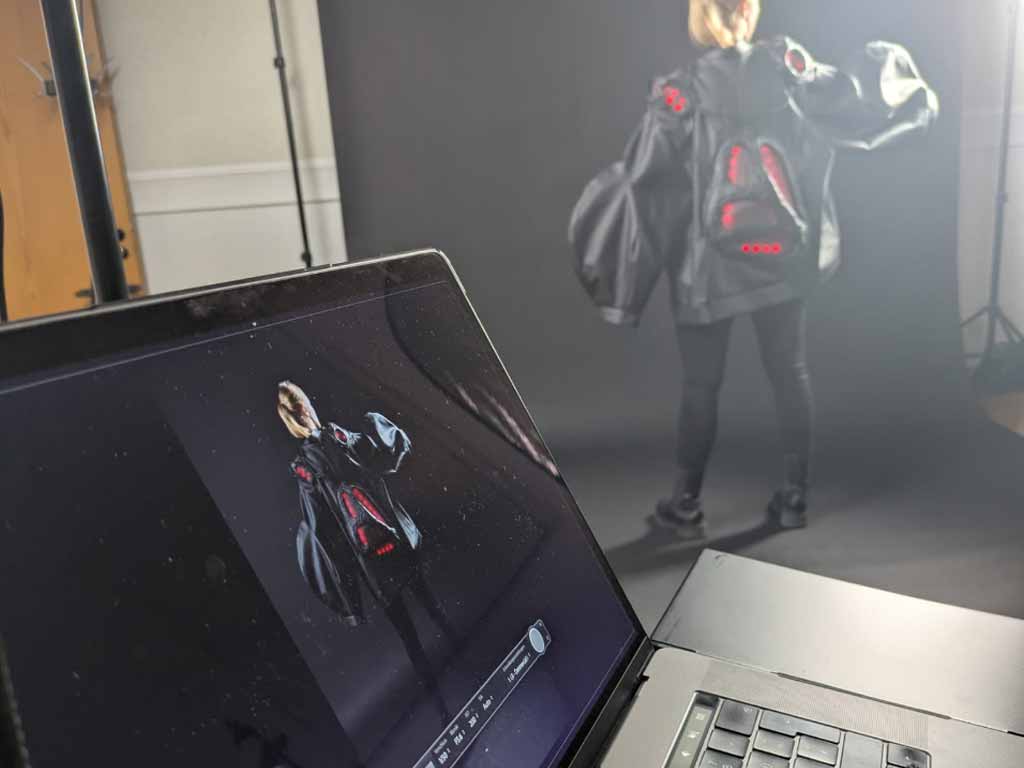
Between Fabric and Pixels: How Student Kotryna Manukian Reinvents Fashion in the Digital Space
Among digital fabrics, virtual catwalks, and innovative design tools, 20-year-old Kotryna Manukian is discovering her very own creative language. The fifth-semester fashion design student at the Vilnius Academy of Arts in Lithuania combines craftsmanship with digital experimentation in her work.
Whether designing physical garments or working with 3D programs, Kotryna loves to play with new techniques and unconventional materials to visualize her ideas. She finds inspiration not only in her studio, but also while hiking in nature, visiting art exhibitions, listening to music, or traveling, where she discovers new cultures and perspectives.
As part of the makerspace project, Kotryna was able to significantly expand her digital skills, from 3D printing and CLO3D to animation and rendering. In the following interview, she talks about her most important insights, creative aha moments, and the challenges she overcame along the way.
Kotryna, you participated in various workshops as part of the Makerspace project. What additional skills were you able to develop there?
Kotryna Manukian: The 3D printing workshops significantly broadened my horizons because I learned new digital tools and applications that were previously completely foreign to me. The CLO3D workshop, in particular, was a milestone for me – I was able to significantly expand my skills in texturing, animation, and rendering. I also used programs like Adobe After Effects and Premiere Pro for the first time. Without the Makerspace, I probably would never have had the opportunity to explore these tools or gain the confidence to use them creatively. Overall, the experience greatly expanded my digital skills and gave me deep insights into fashion innovation and presentation.
Was there a particular “aha moment” while working in the Makerspace?
Kotryna Manukian: Yes, definitely! One of my biggest aha moments was when I learned how to properly apply textures in CLO3D. Suddenly, my garment seemed alive—more realistic, more expressive, and much more professional. Understanding how materials and textures interact with each other in the program fundamentally changed my approach to digital fashion. It was a real breakthrough for my project.
The makerspace also fostered exchanges between universities. What collaborations or partnerships would you like to see in the future?
Kotryna Manukian: I was very impressed by the work of the academy in Amsterdam. They have a strong digital foundation, especially in areas like digital design, CLO3D, and 3D visualization. A partnership or exchange with them could be incredibly valuable to us. If we could integrate their approach and expertise into our curriculum, it would strengthen the digital portion of our studies. At the same time, the students could learn from each other, as they all bring different strengths and perspectives.
What was the biggest challenge for you—and how did you overcome it?
Kotryna Manukian: My biggest challenge at the beginning was working with textures in CLO3D. I wasn’t sure how to do it correctly. But by experimenting and applying what I learned in the workshops, I made rapid progress. The sense of success right from the start gave me confidence and helped me stay motivated.
What specific lessons have you learned from working on your avatar or outfit?
Kotryna Manukian: I’ve made great progress, especially in the areas of texturing, animation, and rendering. Working with accessories has also been a valuable experience – it’s added complexity and detail to my designs.




